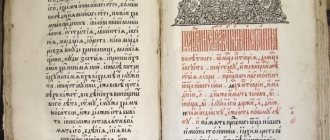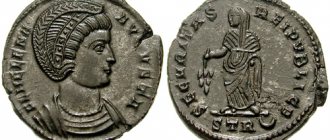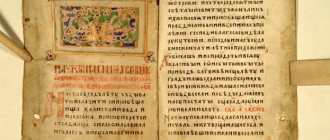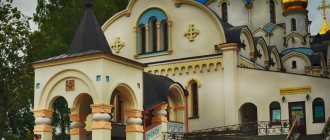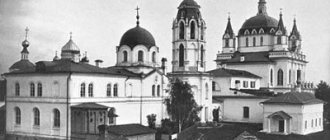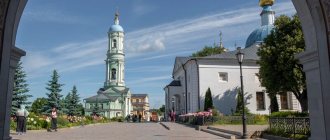MOSCOW, April 15. /TASS/. On April 18-19, federal television channels will broadcast live the Easter service from the Cathedral of Christ the Savior in Moscow. On Channel One, Rossiya-1 and NTV “Easter of Christ. The live broadcast will begin on April 18 at 23:30 Moscow time, as follows from the TV channels’ program schedules.
The Spas TV channel will begin broadcasting from the Cathedral of Christ the Savior at 23:00 Moscow time. “The Easter broadcast of Spas traditionally consists of a multi-hour holiday telethon, in which our viewers, together with well-known compatriots, congratulate each other and the country on the main day of the year, watch and pray with everyone during the sacrament of the descent of the Holy Fire, and immerse themselves in our authors into the meaning of this holiday, follow the rich chronicle of Easter events around the world live,” the channel’s general director Boris Korchevnikov told TASS. - The current upheavals, of course, will make adjustments to this broadcast, but only minor ones - quarantine will not allow us to make a television event of the previous scale, but will not be able to diminish the scale of Easter itself - and here it will be, even with restrained television techniques, “remotely” transferred anyway."
The Soyuz TV channel will also broadcast the Easter service.
The resources included in the Gazprom Media holding will ensure the production and transmission of signals for broadcasts of church services from Orthodox churches in Moscow and St. Petersburg and Easter services in the Moscow Cathedral of the Armenian Apostolic Church. The production of broadcasts of Orthodox services is carried out in partnership with the Department for Relations of the Church with Society and the Media of the Moscow Patriarchate. All broadcasts will be available at a special address vera.premier.one.
Live broadcasts of services from churches in Russian regions can also be viewed on the website of the Orthodox magazine “Thomas”.
VOLGA REGION
Church of the Transfiguration in Samara - 9:00 Moscow time, 16:00 Moscow time
Church of the Revival of Togliatti - 10:00 Moscow time
Church Ulyanovsk - 10:00 Moscow time
Church of the Revival in Naberezhnye Chelny - 10:00 Moscow time, 16:00 Moscow time
Evangelical Church of Christ, Nizhny Novgorod - 10:00 Moscow time
Church of the Good News in Samara - 9:00 Moscow time
Church of Concord, Penza - 10:00 Moscow time
Balashov Bible Church - 10:00 Moscow time
Church of the Revival in Syzran - 8:00 Moscow time
Epiphany Cathedral in Yelokhov
Consent to the processing of personal data
The user, by leaving a request, subscribing, commenting, requesting feedback, registering or performing other actions related to entering his personal data on the website https://elohov.ru, accepts this Consent to the processing of personal data (hereinafter referred to as the Consent ), located at https://elohov.ru/personal-data-usage-terms/.
Acceptance of Consent is confirmation of the fact that the User agrees with all points of the Consent. The user gives his consent to the organization “LOCAL RELIGIOUS ORGANIZATION ORTHODOX PARISH OF THE CATHEDRAL OF THE EPHOPY OF MOUNTAINS. MOSCOW MOSCOW DIOCESE OF THE RUSSIAN ORTHODOX CHURCH (MOSCOW PATRIARCHATE)", which owns the website https://elohov.ru to process your personal data with the following conditions:
The user consents to the processing of his personal data, both without the use of automation tools and with their use. Consent is given to the processing of the following personal data (that is not special or biometric): • last name, first name, patronymic; • email address(es); • other data provided by the User.
The user's personal data is not publicly available.
1. The purpose of processing personal data is to provide full access to the functionality of the site https://elohov.ru.
2. The basis for the collection, processing and storage of personal data are: • Art. 23, 24 of the Constitution of the Russian Federation; • Art. 2, 5, 6, 7, 9, 18–22 of the Federal Law of July 27, 2006 No. 152-FZ “On Personal Data”; • Art. 18 of the Federal Law of March 13, 2006 No. 38-FZ “On Advertising”; • Charter of the organization “LOCAL RELIGIOUS ORGANIZATION ORTHODOX PARISH OF THE CATHEDRAL OF THE EPHOPY OF MOUNTAINS. MOSCOW MOSCOW DIOCESE OF THE RUSSIAN ORTHODOX CHURCH (MOSCOW PATRIARCHATE)"; • Personal data processing policy.
3. During the processing of personal data, the following actions with personal data will be performed: collection, recording, systematization, accumulation, storage, clarification (updating, changing), extraction, use, transfer (distribution, provision, access), depersonalization, blocking, removal, destruction.
4. Transfer of personal data hidden for general viewing to third parties is not carried out, except in cases provided for by the legislation of the Russian Federation.
5. The user confirms that the personal data he specified belongs to him personally.
6. Personal data is stored and processed until the liquidation of the organization “LOCAL RELIGIOUS ORGANIZATION ORTHODOX PARISH OF THE CATHEDRAL OF THE EPHOPY OF THE MOUNTAINS. MOSCOW MOSCOW DIOCESE OF THE RUSSIAN ORTHODOX CHURCH (MOSCOW PATRIARCHATE)". Storage of personal data is carried out in accordance with Federal Law No. 125-FZ “On Archiving in the Russian Federation” and other regulatory legal acts in the field of archiving and archival storage.
7. The user agrees to receive information messages from the site https://elohov.ru. Personal data is processed until the User unsubscribes from receiving information messages.
8. Consent can be revoked by the User or his legal representative by sending a Revocation of Consent by email – marked “Revocation of consent to the processing of personal data.” If the User withdraws consent to the processing of personal data, the organization “LOCAL RELIGIOUS ORGANIZATION ORTHODOX PARISH OF THE CATHEDRAL OF THE EPHOPY OF MOUNTAINS. OF MOSCOW MOSCOW DIOCESE OF THE RUSSIAN ORTHODOX CHURCH (MOSCOW PATRIARCHATE)" has the right to continue processing personal data without the consent of the User if there are grounds specified in paragraphs 2 - 11 of part 1 of article 6, part 2 of article 10 and part 2 of article 11 of Federal Law No. 152-FZ " On personal data" dated July 27, 2006. Deleting personal data makes it impossible to access the full version of the functionality of the site https://elohov.ru.
9. This Consent is unlimited and is valid all the time until the termination of the processing of personal data specified in clauses 7 and 8 of this Consent.
10. Location of the organization “LOCAL RELIGIOUS ORGANIZATION ORTHODOX PARISH OF THE EPHOPYAVLENSKY CATHEDRAL OF MOUNTAINS. MOSCOW MOSCOW DIOCESE OF THE RUSSIAN ORTHODOX CHURCH (MOSCOW PATRIARCHATE)" in accordance with the constituent documents: 107066, Moscow, Spartakovskaya street, 15.
Descent of the Holy Fire
The NTV channel at 13:15 Moscow time on April 18 will begin broadcasting live the descent of the Holy Fire from Jerusalem.
As Akiva Tor, head of the Department of Diaspora and World Religious Affairs at the Israeli Foreign Ministry, previously said, the ceremony will be held “without the presence of pilgrims” and with a “limited number of participants” due to measures to prevent the spread of coronavirus. After the descent ceremony, representatives of the Greek Orthodox Church will deliver the fire to the Jaffa Gate of the Old City of Jerusalem, where it will be received by embassy representatives or other authorized persons. The delegations will then transport the flame from Jerusalem to Ben Gurion Airport, where it will be handed over to representatives of the respective countries who will not be able to leave their planes due to quarantine.
Traditionally, the fire will be delivered to Russia by a delegation from the St. Andrew the First-Called Foundation. As the foundation's press service previously reported to TASS, it is not possible to organize a mass meeting of the Holy Fire at Vnukovo airport; it will be brought to the beginning of the Easter service at the Cathedral of Christ the Savior.
Webcam online in real time
Holy Dormition Svyatogorsk Lavra (Donbass)
The holiday of the Resurrection of Christ, Holy Easter, occupies a central place among all Christian holidays - “holidays, a holiday and a triumph of triumphs.” The word "Easter" means "passing". In the Old Testament Church, Easter was the name of the holiday established in memory of the exodus of the people of Israel from Egypt and the liberation of the Jews from Egyptian slavery. And in the New Testament Church - as a sign that the Son of God Himself freed us from the slavery of death, from the slavery of sin and the devil. The risen Lord brought the souls of the righteous out of hell, and grants eternal life to those who believe in Him. The entire service of Holy Easter is especially solemn and imbued with one feeling - jubilant joy in the Risen Lord. The festive Matins is preceded by a religious procession. Priests in white vestments emerge from the altar singing the stichera “Thy Resurrection, O Christ the Savior, the angels sing in heaven, and grant us on earth to glorify Thee with a pure heart.” The procession of the cross goes around the temple, like the myrrh-bearing women who walked early in the morning to the tomb of the Savior. All worshipers walk with lit candles. The procession stops in front of the closed doors of the temple, as if at the Holy Sepulcher. And here, on the steps of the church, the festive Matins begins: The rector, after the usual exclamation that begins Matins, together with the rest of the clergy, sings the troparion of Holy Pascha three times: “Christ is risen from the dead, trampling down death by death and giving life to those in the tombs.” Then this troparion is repeated three times in chorus. The rector for the first time pronounces the jubilant Easter greeting “Christ is Risen!” Matins continues with verses of the ancient prophecies of King David about the Resurrection: “May God rise again, and let His enemies be scattered…”. After each verse, the choir sings the troparion “Christ is Risen...”. After this, everyone enters the temple to the singing of the festive troparion. The departure from the temple and the closing of its doors also symbolizes the expulsion of our first parents from paradise. And only Christ the Redeemer opened the doors of heaven for us again. When at the beginning of Easter Matins the gates of the temple are opened again, this marks the opening of the doors of paradise for the human race by Christ’s death and Resurrection. Upon entering the temple, the great litany is pronounced and then the Easter canon is sung. The beginning of each song of the canon is sung by the clergy in the altar. After each song of the canon, a small litany is said. After the canon, the luminary is sung: “Having fallen asleep in the flesh as if dead, Thou art the King and Lord of three days, raised up from aphids and abolished death, Easter incorruptibility, the salvation of the world.” Then the stichera for Praise and the stichera for Easter are sung. After which all those praying in the temple greet each other with the Easter greeting “Christ is Risen.” Then the word of St. John Chrysostom for Easter is read. The hours on Easter and Bright Week consist of Easter chants. The Liturgy begins, like Matins, according to the Easter rite, with the singing of the verses “May God rise again...”. Special Easter antiphons are sung. The Gospel is read in different languages. Instead of “It is worthy to eat” - the worthy of Easter: “An angel cried...”. At the end of the liturgy, instead of singing “Blessed is he who comes in the name of the Lord...”, “We have seen the true light...”, instead of the 33rd Psalm, “Christ is Risen” is sung. The Royal Doors are not closed throughout Bright Week. The prayer “To the Heavenly King” is not sung at any service before the Feast of Pentecost. At the Easter service, artos is consecrated - special bread on which the cross or the Resurrection of Christ is depicted. Throughout Bright Week, the artos is served on a special table on the salt, and on Saturday it is divided into small parts and distributed to those praying. Feeling by living faith the invisible presence of the Lord, the apostles had the custom, when starting a meal, to leave a place for Christ and bread, as if for Him. In remembrance of this custom, the artos is consecrated on Easter and placed before the eyes of believers, a reminder of the presence of the Risen Lord with us.
Live broadcast provided Verified: 12/20/2020
Easter services without parishioners
Patriarch Kirill of Moscow and All Rus' called on believers to stay at home and watch services on TV, complying with the sanitary regulations introduced to combat the spread of coronavirus.
Earlier, the website of the Moscow Patriarchate published a circular letter from the manager of the patriarchate, Metropolitan Dionisy (Porubai) of the Resurrection, according to which church services during Holy Week and Easter in Moscow and the Moscow region from April 13 to April 19 will be held without parishioners due to the requirement of the sanitary authorities.
Orthodox believers on April 19 will celebrate Easter, or the Bright Resurrection of Christ - the great (main) holiday of the Christian church, dedicated to the resurrection of Jesus Christ. This event is central to Sacred history. Information about him is contained in all four Gospels - Matthew, Mark, Luke and John.
The Fifth Lavra of the Russian Land: the fate of the Donbass monastery as an example of the will of the Lord
In 1931, an old railroad worker from Slavyansk in the Donbass, Sergei Ivanovich Kudienko, learned that the famous writer Maxim Gorky . The veteran got excited and sent a postcard to the former Volga tramp, with whom he worked as a road worker at the Slavyansk station forty years ago. I bought what was on hand at the station kiosk - a view of Svyatogorye.
Gorky responded quickly, sent a letter in which he recalled with emotion: “I recognized the Donets, and the chalk cliffs, and the monastery, and even the tree under which I slept then...”
True, the monastery itself, the Svyatogorsk monastery, famous throughout Russia, which was visited in different years by almost all the famous writers of the empire, not only Gorky, no longer existed by that time - the new government closed the monastery in the chalk caves 10 years ago.
At the end of the life of Gorky and Kudienko, a sanatorium for Donbass miners and auxiliary services for them were located in the monastery cells and churches. Only 70 years later, restoration and a new period in the life of the ancient monastery began.
On the Donets, near the Great Transport
No one knows the exact date of foundation of the Holy Dormition Monastery on the Bolshoy Perevoz across the Seversky Donets.
It is reliably known that the first mention of him known to us, which can be attributed to the period between 1517 and 1526, is found in the famous “Notes on Moscow Affairs” of the Austrian diplomat Baron Herberstein . The envoy of the Austrian Tsar wrote: “... the warriors whom the Emperor, according to custom, keeps there on guard for the purpose of reconnaissance and deterring Tatar raids... sat near the mouth of the Small Tanaid, four days' journey from Azov, near the place of the Great Perevoz, near the Holy Mountains...”
UOC: Ukrainian laurels are categorically against autocephaly
©
RIA Novosti, Sergey Pyatakov / Go to photobank
However, by “Holy Mountains” they could not necessarily mean a monastery. Despite the fact that throughout the sixteenth century, chronicles wrote about the Holy Mountains (Lvov, for example, under 1547, Nikonovskaya - under 1555) as the place from where “the Tatar king climbed over the Donets” and “went to the Tula and Ryazan Ukrainians,” all However, many historians are inclined to believe that the monastery hostel with its own charter appeared here in the seventeenth century.
It is clear that church leaders had their own opinion and, for example, back in 1851, the rector of the Svyatogorsk monastery, Archimandrite Arseny , stated that the first inhabitants in the caves carved into the chalk mountains soaring high above the Donets appeared immediately after the Tatar invasion and they came from Kiev . “We cannot doubt that the people of the Pechersk Lavra founded our monastery...” he asserted.
Arseny could be understood - at the end of the reign of Catherine the Great, unexpectedly ended up on the list of those closed during the seizure of monastery property by the empress to the war-ravaged Russian treasury.
It was revived only in the forties of the century before last. And the monastery needed to strengthen its position, including by linking it to the most revered monastery in the Orthodox world.
Without the Potemkins nothing would have happened
For the first time, the Holy Dormition Monastery in the Holy Mountains was restored through the efforts of the famous Potemkin . To this day, the remains of their estate “Holy Mountains” can be seen a little to the side of the monument to Artem. The view from there is fabulous.
The owner of the estate, the devout benefactor Tatyana Potemkina , is credited with reviving the ancient Russian monastery. It must be said that attempts to do this had been made before, but only Potemkina approached the matter in a businesslike and partial manner, with desire.
© commons.wikimedia.org, Public Domain / Go to photobank
For two years in a row (1842-1843), Tatyana Borisovna, as they say, “went through the authorities.” And she achieved her goal - on January 15, 1844, Emperor Nicholas I highly approved the report of the Holy Synod “On the restoration of the Svyatogorsk Monastery with the naming of the Svyatogorsk Assumption Hermitage according to the charter of the Sofronievskaya and Glinskaya Hermitage of the Kursk Diocese.”
In the Glinsk Hermitage, in the person of Hieromonk Arseny, they found the abbot of the monastery. Kharkov Archbishop Innokenty . Let us recall that the Holy Mountains until the twenties of the last century were located on the territory of the Kharkov province, that southern part that became the north of the Donetsk region of the Ukrainian SSR.
With Arseny, 12 monks of the Glinsk Hermitage moved to the new monastery, and in August 1844 the monastery was opened. On August 15, “the joyful news of the restoration of the Svyatogorsk monastery spread everywhere, and a countless number of people and nobility flowed in from all surrounding and distant countries. There are up to four hundred carriages alone.” This is what Tatiana Potemkina’s brother, Prince Nikolai Golitsyn , who was destined to find his final refuge in the monastery tomb.
The richest monastery of the Kharkov diocese
The Svyatogorsk Monastery quickly went uphill. In 1861, he was visited by the august family and Alexander II . The monastery was headed by the most energetic abbot German , who turned out to be a talented business executive. The monastery's wealth began with 300 acres of land and 10,000 rubles assigned to it by Tatyana Potemkina.
The monastery was built quickly: in a matter of years, the rector's, fraternal, ward and refectory buildings, a decent hotel for visitors, were erected, a description of which is found in Averchenko and Chekhov , and in many other celebrities who visited the monastery.
Its wealth grew especially quickly after the reforms of Alexander II, and the liberation of peasants from serfdom played no small role in this.
The connection between the monastery and its workers is vividly and very succinctly described by the famous pre-revolutionary writer Vasily Nemirovich-Danchenko , brother of the founder of the Moscow Art Theater. In general, his book “Holy Mountains” is not only a storehouse of subtle psychological observations, but also an outline of the life and economy of the monastery. Moreover, the essay is not always biased.
September 20. An Orthodox diocese was created in Novorossiya
©
RIA Novosti, Balabanov / Go to photobank
This is how Nemirovich-Danchenko describes the beginning of his journey to the monastery. He immediately takes the bull by the horns:
“- This is all monastic! - my companion waved his hand around when we drove about ten versts from Slavyansk.
- And fields and meadows?
- Yes... Previously, the monks themselves were engaged in arable farming, but when the harvests began to fail, they handed them over to the peasants... Our peasants have little land, they are poor. There is scarcity of fisheries. Solyanoy barely feeds anyone... And even that is for the townspeople. It happens in our country that a peasant pays more taxes and all kinds of quitrents than he earns in a year!
- Who helps out?
- Abode. She benefits from helping. The entire surrounding area is therefore in her hands. And the land is rented from the monks. The monastery could not have wished for anything better. The sowing is peasant, and a third of the harvest is for the monastery...
- It's a lot.
“But where can you go... Going to a Jew is even worse.”
There was no end to the “church tourists”
The wealth of the monastery was based not only on the rent of land, of course, but also on the numerous crafts mastered by its inhabitants, but mainly on the money of pilgrims who went to the Holy Mountains both on purpose and returning from the same Kiev-Pechersk Lavra.
The nature of these places, the river, forest, chalk mountains - all this made Svyatogorye even more attractive to pilgrims.
The official history of the monastery itself describes that period of its life as follows: “In the surrounding villages (Golaya Dolina, Bannoye and Prishib) schools were established in which the Svyatogorsk residents taught literacy, church singing, applied arts, etc. The number of students in them exceeded 300 people.
The prosperity of the monastery was greatly facilitated by the hospitality of strangers, which attracted pious believers of all classes: the monastery fed and watered for free, accepting everyone who visited it.
The customs and orders were so beautiful that there was a saying among the local population: “It’s good, like in the Holy Mountains.” The church services and rules were taken from the Glinsk Hermitage and were distinguished by decorum and length of services, and the fraternal choir was famous for its ancient tunes and the selective quality of its voices.”
© commons.wikimedia.org, Public Domain/Geka b Chromolithograph of 1912
John the Recluse and his miracles
But still, for believers, the main thing in the monasteries has always been that special people lived in them - elders, people of immaculate, holy life, who sometimes surprised those around them not only with piety and wisdom, but also with miracles. For the Svyatogorsk Holy Dormition Monastery, such a person was the Monk John the Recluse . He spent seventeen years in seclusion, in the heart of the chalk rock.
A contemporary described his feat as follows: “Imagine, reader, a cramped and low cell, the vaults of which are no higher than human height, carved into the chalk, the light into which penetrates through a narrow hole drilled out of the rock at a fairly large distance. The atmosphere of the cell is sharply cold and damp, reminiscent of a glacier: it seems to prick you and arouse a feverish chill in your body. The entire decoration of the cell consists of a wooden open coffin with a large grave wooden cross at the head, on which the crucified Lord is written; there was a little straw in the coffin and a head, and in this form it served as a bed of peace for the recluse.”
John died in 1867, but since then miracles of healing began to occur at his grave in the monastery and next to it. In 1995, the Ukrainian Orthodox Church canonized John the Recluse. His extraordinary personality and the miracles revealed on his relics made it possible at the right time to give the monastery the title of Lavra.
70 years of oblivion and the appearance of the Lavra
In 1922, the Soviet government closed the monastery. The occasion was an episode of the campaign to confiscate church valuables, which took place throughout Soviet Russia in the spring. Archimandrite Tryphon refused to voluntarily hand over the valuables, saying: “You are strength and power, take it yourself, but we will not hand over anything voluntarily.”
The authorities have drawn conclusions. As the official history of the monastery lapidly notes, “from that moment on, the monastery ceased to exist. The former monastery buildings began to be reclaimed by the Rest House.”
Overcoming church schism. Experience of Novorossiya
A separate story can be written about what was done on the territory of the monastery during the years of Soviet power, as well as about how the monastery was restored. This happened in 1992, at the very beginning of the year, when Bishop Alypiy on Epiphany held the first divine service after a 70-year break on the banks of the Donets.
The former director of the Slavyanogorsk Historical and Architectural Reserve Vladimir Dedov recalled at one time: since 1996, the sanatorium named after. Artema began to cede land and buildings to the newly organized (for the third time in its history) monastery. In 1999, 8 architectural monuments of the 17th-19th centuries were transferred, including a chalk rock cave complex. The process of reviving the monastery was finally completed in 2003. And the next year, the Synod of the UOC-MP granted the monastery (now a complex of more than 40 buildings) the status of a lavra.
This is how the fifth Lavra, Svyatogorsk Lavra, appeared on Russian soil.
© svlavra.church.ua
Today she is going through not the easiest times.
The schismatics, who, with the connivance of official Kyiv, started the creation of a false United Local Ukrainian Church, are full of aggressive plans. They are already setting their sights on the Kiev Pechersk Lavra. Pochaevskaya, in the Ternopil region, is under siege. It is clear that they will not leave Svyatogorskaya alone.
And here the monastery has hope only in the Lord and in the support of people faithful to Orthodoxy. The monastery suffered many troubles, two closures and the desecration of shrines. But he survived and twice returned to his state, inspired from above. There is no doubt that he will survive the current disorder and ruin in the state.



